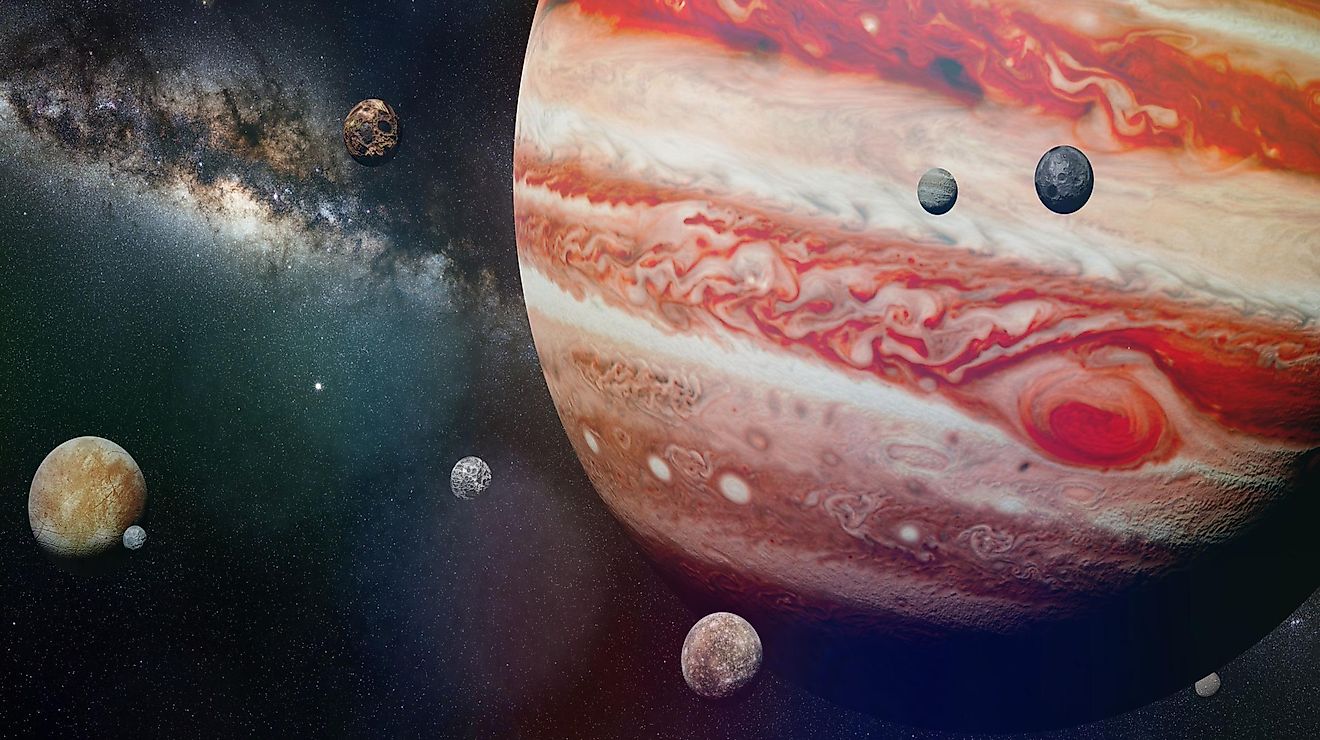
Jupiter’s Dynamic Youth as a Colossal Magnetic Entity
Jupiter, the most massive planet in our Solar System, has not always retained the compact gas giant image we associate with it today. Recent findings published in Nature Astronomy provide an intriguing glimpse into the formative years of Jupiter, showcasing a planet that was significantly larger, more vibrant, and astonishingly more magnetic compared to its present form. Approximately 3.8 million years after the emergence of the Solar System’s earliest solid objects, Jupiter existed as an enormous, swiftly rotating gas giant—twice its current dimensions and emanating energy from a chaotic formation process.
This pioneering research synthesizes principles of celestial mechanics, planetary magnetic modeling, and ancient orbital dynamics to map out Jupiter’s early developmental trajectory. Spearheaded by astrophysicists Konstantin Batygin and Fred Adams, the study not only uncovers the young planet’s extraordinary size and strength but also illustrates how these formative traits influenced the layout of Jupiter’s moons and played a key role in shaping the early Solar System.
Insights Embedded in Satellite Orbits
To unravel Jupiter’s primordial history, the research group concentrated on the lesser-known inner moons—Amalthea and Thebe. These small, irregularly shaped satellites orbit much closer to Jupiter than the renowned Galilean moons (Io, Europa, Ganymede, and Callisto). Although they may appear inconsequential at first glance, Amalthea and Thebe act as cosmic time capsules, harboring critical insights about the environment in which they originated.
During its nascent stage, Jupiter’s immense gravitational force and the surrounding disk of gas and dust prompted the nearby moons to migrate. One such moon, Io, is thought to have moved inward through the planetary system. In its journey, interactions with orbital resonances involving Amalthea and Thebe changed their trajectories, causing them to adopt inclined orbits. These deviations, which have been preserved over time, serve as fossilized records of that early dynamic ballet.
By simulating these gravitational dynamics, researchers identified the original position of Io’s orbit—about 1.6 to 1.9 times Jupiter’s present radius. Since migrating moons tend to linger near the boundary of their planet’s disk, this offers a probable estimate of Jupiter’s size during that era. It also provides a direct perspective on how inflated Jupiter once was—expanded to approximately 2–2.5 times its contemporary radius.
Jupiter’s Ancient Magnetic Field
Applying the principles of angular momentum—a foundational conservation law relating to spin and mass—scientists were able to trace back from Jupiter’s current 10-hour rotation period to infer how rapidly the planet must have been spinning earlier in its history. A more massive and physically larger Jupiter would have spun even more swiftly (potentially completing a full rotation in just a few hours), resulting in a magnetic field significantly stronger than the one we observe today.
The results suggest that ancient Jupiter possessed a magnetic field approximately 50 times more powerful than the modern-day equivalent (~21 millitesla as opposed to today’s ~0.4 millitesla). At such strengths, Jupiter’s magnetosphere would not only shield the planet and its vicinity from solar radiation but could also influence its moon-forming disk and redirect gas and dust particles—a crucial mechanism for determining the orbits and dimensions of future moons.
Main Findings and Significant Moments
The primary outcomes of the new study outline a bold characterization of early Jupiter:
– Primordial radius: 2 to 2.5 times the current size
– Magnetic field strength: ~21 millitesla (50× stronger)
– Growth rate: Accumulating 1.2–2.4 Jupiter masses of gas per million years
– Rotation speed: More rapid than the present-day 10-hour rotation
These attributes strengthen the assertion that early Jupiter bore more resemblance to a small star than to a settled planet—hot, swollen, intensely magnetic, and still consuming gas from the surrounding solar nebula at an extraordinary rate.
From Volcanic Origins to Gravitational Titan
Jupiter, similar to other gas giants, is believed to have been formed through a mechanism known as core accretion, where solid materials in the nascent Solar System conglomerated into a substantial core that subsequently attracted large quantities of hydrogen and helium. Once this gas accretion phase commenced, Jupiter rapidly expanded, achieving its peak size while still cloaked in remnants from the primordial solar nebula.
In the following tens of millions of years, the young giant planet began to cool and contract. As it released internal heat, it shrunk to its present radius of about 70,000 kilometers. The study places this initial inflated stage at approximately 3.8 million years after the formation of calcium-aluminum-rich inclusions (CAIs)—the oldest known materials in the Solar System. This key timestamp is derived from high-precision measurements found in meteorites, providing a clear understanding of the timing of planetary development.
Shaping a Solar System
Jupiter’s magnetically charged youth was not merely an academic interest—it was instrumental in shaping the early Solar System. The planet’s oversized form and magnetic dominance likely played a pivotal role in determining everything from the structure of